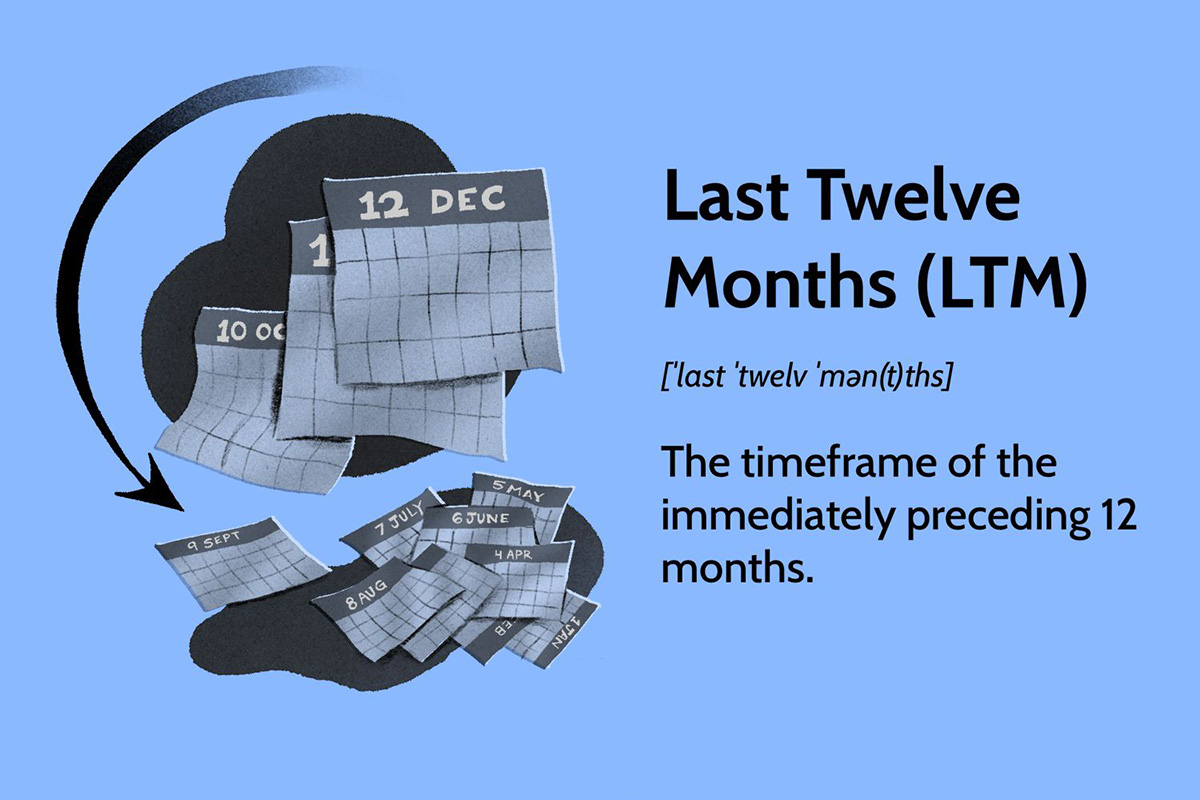

Finance
What Does MAPD Stand For In Insurance
Published: November 21, 2023
Discover what MAPD stands for in insurance and how it relates to your financial needs. Explore the world of finance and insurance with this informative guide.
(Many of the links in this article redirect to a specific reviewed product. Your purchase of these products through affiliate links helps to generate commission for LiveWell, at no extra cost. Learn more)
Table of Contents
Introduction
In the world of insurance, there are numerous acronyms that can leave many people scratching their heads. One such acronym is MAPD, which stands for Medicare Advantage Prescription Drug plans. For those who are new to the world of Medicare and insurance, understanding what MAPD plans are and how they work can seem like a daunting task.
MAPD plans are a type of insurance policy that combines the benefits of both Medicare Advantage (Part C) and Prescription Drug (Part D) coverage. These plans are offered by private insurance companies approved by Medicare and are designed to provide comprehensive coverage for Medicare beneficiaries.
Understanding the ins and outs of MAPD plans is essential for individuals who are eligible for Medicare and are looking to enroll in a plan that suits their healthcare needs. In this article, we will delve into the definition of MAPD, explore the key features of these plans, discuss the pros and cons, and provide guidance on how to choose the right MAPD plan for you.
Definition of MAPD
MAPD stands for Medicare Advantage Prescription Drug plans. These plans are an all-in-one alternative to original Medicare, combining Parts A and B (hospital and medical coverage) with Part D prescription drug coverage. They are offered by private insurance companies approved by Medicare and provide Medicare beneficiaries with a comprehensive and convenient healthcare solution.
With a MAPD plan, individuals receive their healthcare benefits and prescription drug coverage through a single insurance plan, rather than having separate coverage for Medicare and prescription drugs. This integration of services simplifies the healthcare process and can potentially save beneficiaries both time and money.
MAPD plans operate under the Medicare Advantage program, which allows private insurance companies to offer Medicare benefits. These plans must comply with Medicare guidelines and regulations, ensuring that beneficiaries receive the same level of coverage that they would with original Medicare.
It’s important to note that although MAPD plans provide comprehensive coverage, they are not the same as Medigap plans. Medigap plans are designed to supplement original Medicare by filling in the “gaps” in coverage, such as deductibles and copayments. MAPD plans, on the other hand, replace original Medicare and provide all-in-one coverage for hospital, medical, and prescription drug expenses.
MAPD plans offer a wide range of coverage options, including various network types (HMO, PPO, etc.), different prescription drug formularies, and additional benefits such as dental and vision coverage. These plans allow beneficiaries to choose the coverage that best fits their individual healthcare needs and budget.
Medicare Advantage Prescription Drug Plans
Medicare Advantage Prescription Drug (MAPD) plans are a type of Medicare insurance that combines the benefits of Medicare Parts A and B with prescription drug coverage (Part D). These plans are offered by private insurance companies approved by Medicare and provide a comprehensive and convenient healthcare solution for Medicare beneficiaries.
MAPD plans function as an alternative to original Medicare, offering all-in-one coverage for hospital, medical, and prescription drug expenses. With a MAPD plan, individuals receive their healthcare benefits and prescription drug coverage through a single insurance plan, rather than having separate coverage for Medicare and prescription drugs.
One of the primary advantages of MAPD plans is the convenience they provide. By consolidating multiple coverage components into a single plan, beneficiaries can simplify their healthcare management. They only need to navigate one plan instead of coordinating multiple policies and dealing with different insurers.
MAPD plans typically include additional benefits beyond what original Medicare offers. These can include coverage for dental care, vision care, hearing aids, and wellness programs. Some plans may even provide gym memberships or transportation services to medical appointments.
It’s important to note that MAPD plans have different network options, such as Health Maintenance Organization (HMO), Preferred Provider Organization (PPO), and Private Fee-for-Service (PFFS). These network options determine which doctors, hospitals, and other healthcare providers are available to the beneficiary. It’s essential to review the network details of a MAPD plan to ensure that preferred healthcare providers are included.
When considering a MAPD plan, it’s crucial to review the prescription drug formularies. Each plan has its list of covered medications and associated costs, including copays and deductibles. Beneficiaries should make sure that their prescription medications are covered by the plan and assess the out-of-pocket costs associated with their specific medications.
MAPD plans require beneficiaries to pay a monthly premium in addition to their Medicare Part B premium. The premium amount can vary depending on the specific plan, coverage options, and location. Some plans may have certain deductibles or copayments for medical services and prescription drugs. However, out-of-pocket expenses for Medicare-covered services are capped for each plan year, providing beneficiaries with financial protection.
In summary, Medicare Advantage Prescription Drug (MAPD) plans offer a comprehensive and convenient healthcare solution for Medicare beneficiaries. These plans provide all-in-one coverage for hospital, medical, and prescription drug expenses, with the added benefit of additional services and benefits. By reviewing network options, prescription drug formularies, and out-of-pocket costs, individuals can choose a MAPD plan that best meets their healthcare needs and budget.
Key Features of MAPD Insurance
Medicare Advantage Prescription Drug (MAPD) insurance plans offer several key features that set them apart from other forms of Medicare coverage. These features provide beneficiaries with comprehensive healthcare coverage, additional benefits, and cost-saving opportunities. Here are some of the key features of MAPD insurance:
- All-in-One Coverage: MAPD plans combine the benefits of Medicare Parts A and B with prescription drug coverage (Part D). This means that beneficiaries receive hospital, medical, and prescription drug benefits through a single insurance plan, simplifying the healthcare process.
- Add-On Benefits: MAPD plans often include additional benefits beyond what original Medicare provides. These can include coverage for dental care, vision care, hearing aids, wellness programs, and even fitness memberships. These added benefits enhance overall healthcare and can help individuals maintain a healthier lifestyle.
- Network Options: MAPD plans offer different network options, such as Health Maintenance Organization (HMO), Preferred Provider Organization (PPO), and Private Fee-for-Service (PFFS). Each network type has its advantages and may determine which healthcare providers are available to the beneficiary. It’s important to review network details to ensure preferred healthcare providers are included.
- Prescription Drug Coverage: One of the primary advantages of MAPD plans is the inclusion of prescription drug coverage (Part D). These plans typically have a formulary, which is a list of covered medications. Beneficiaries should review the formulary to ensure that their prescription medications are included and assess any associated costs.
- Out-of-Pocket Maximum: MAPD plans have an out-of-pocket maximum, which is the maximum amount beneficiaries will have to pay for covered services in a given year. Once this maximum is reached, the plan covers 100% of Medicare-approved expenses, providing financial protection and peace of mind.
- Flexibility: MAPD plans provide beneficiaries with flexibility in choosing their healthcare providers. While some plans may have a preferred provider network, others may offer out-of-network coverage at a higher cost. This flexibility allows individuals to continue seeing their preferred doctors and specialists, provided they are within the plan’s network.
By understanding and considering these key features, individuals can make informed decisions when choosing a Medicare Advantage Prescription Drug (MAPD) insurance plan. It’s important to review plan options, assess individual healthcare needs, and compare coverage and costs to select the plan that best aligns with one’s needs and preferences.
Pros and Cons of MAPD Plans
Medicare Advantage Prescription Drug (MAPD) plans offer a range of benefits and advantages for Medicare beneficiaries. However, like any insurance option, there are also considerations to keep in mind. Here, we will explore the pros and cons of MAPD plans:
Pros of MAPD Plans:
- All-in-One Coverage: One of the biggest advantages of MAPD plans is the consolidation of Medicare Parts A, B, and D into a single insurance plan. This simplifies healthcare management by eliminating the need for separate policies for hospital, medical, and prescription drug coverage.
- Additional Benefits: MAPD plans often offer additional benefits beyond what original Medicare provides. These can include dental, vision, hearing, and wellness benefits. The inclusion of these extra services can result in cost savings and improved overall health and well-being.
- Predictable Costs: With MAPD plans, beneficiaries have a clear understanding of their costs. These plans have annual out-of-pocket maximums, providing a financial safety net and limiting the amount individuals have to pay for covered services after reaching the maximum.
- Flexibility: MAPD plans provide flexibility in choosing healthcare providers. While some plans have a preferred provider network, others offer out-of-network coverage at a higher cost. This flexibility allows individuals to continue seeing their preferred doctors and specialists, provided they are within the plan’s network or willing to pay extra.
- Potential Cost Savings: In some cases, MAPD plans can offer cost savings compared to traditional Medicare. This is because these plans often have negotiated rates with healthcare providers and may offer lower premiums, copayments, and deductibles.
Cons of MAPD Plans:
- Network Limitations: MAPD plans have network limitations, meaning that beneficiaries may need to choose healthcare providers within the plan’s network. This can be a disadvantage for individuals who have long-standing relationships with specific doctors who are not part of the plan’s network.
- Restrictions on Prescription Medications: MAPD plans have formularies, which are lists of covered medications. If a beneficiary’s prescription medication is not on the formulary, they may need to switch to an alternative medication or pay the full cost out of pocket.
- Prior Authorization Requirements: Some MAPD plans require prior authorization for certain medical services or prescription medications. This can cause delays or additional administrative hassle when seeking healthcare services.
- Geographic Limitations: MAPD plans may have geographic limitations, meaning they may only be available in certain areas or regions. This can be a disadvantage for individuals who travel frequently or have multiple residences.
Considering the pros and cons can help individuals make an informed decision when evaluating Medicare Advantage Prescription Drug (MAPD) plans. It’s important to carefully review plan details, compare coverage, assess preferred healthcare providers, and consider individual healthcare needs to determine if a MAPD plan is the right choice.
How to Choose the Right MAPD Plan for You
Choosing the right Medicare Advantage Prescription Drug (MAPD) plan is an important decision that requires careful consideration. With a multitude of options available, it’s essential to evaluate your individual healthcare needs and preferences to find a plan that best suits you. Here are some key factors to consider when selecting a MAPD plan:
1. Coverage and Benefits:
Review the coverage and benefits offered by each MAPD plan. Consider the specific healthcare services, prescription drugs, and additional benefits that are important to you. Ensure that the plan covers your preferred doctors, hospitals, and specialists within its network.
2. Prescription Drug Formulary:
Check the plan’s prescription drug formulary to ensure that your medications are covered. Note any restrictions or costs associated with certain drugs. If you have specific prescription needs, such as high-cost medications or specialty drugs, ensure that they are covered without excessive out-of-pocket expenses.
3. Cost Considerations:
Evaluate the overall cost structure of each MAPD plan. Consider the monthly premiums, deductibles, copayments, and any coinsurance. Assess your budget and determine how much you are willing and able to pay for healthcare services and prescription drugs.
4. Network Options:
Determine the network type of each MAPD plan, such as Health Maintenance Organization (HMO), Preferred Provider Organization (PPO), or Private Fee-for-Service (PFFS). Assess which network best aligns with your preferred healthcare providers and the level of flexibility you desire in choosing doctors and specialists.
5. Additional Benefits:
Consider the extra benefits offered by each MAPD plan, such as dental, vision, hearing, or wellness programs. Assess whether these additional benefits are important to you and if they align with your healthcare needs and priorities.
6. Quality Ratings:
Take into account the quality ratings of each MAPD plan. Medicare provides quality ratings based on factors such as customer satisfaction, healthcare outcomes, and member experiences. Consider the ratings to ensure that the plan you choose has a track record of delivering quality care.
7. Review Enrollment Periods:
Be aware of the Medicare enrollment periods, such as the Initial Enrollment Period (IEP) and the Annual Enrollment Period (AEP). Understand the specific deadlines and time frames for enrolling in or changing MAPD plans to ensure you make informed decisions within the designated periods.
By carefully evaluating these factors and considering your healthcare needs and preferences, you can choose the right Medicare Advantage Prescription Drug (MAPD) plan for you. Take the time to research and compare different plans, review the details, and consult with insurance agents or healthcare professionals if needed. Remember, selecting the most suitable MAPD plan can greatly impact your access to healthcare services, prescription drugs, and overall peace of mind.
Conclusion
Medicare Advantage Prescription Drug (MAPD) plans offer a comprehensive and convenient healthcare solution for Medicare beneficiaries. These plans combine the benefits of Medicare Parts A, B, and D into a single insurance plan, providing all-in-one coverage for hospital, medical, and prescription drug expenses. With the additional benefits they offer, such as dental, vision, and wellness programs, MAPD plans can enhance overall healthcare and potentially lead to cost savings.
When considering MAPD plans, it’s essential to carefully evaluate coverage options, prescription drug formularies, and network limitations. Assessing your individual healthcare needs, preferences, and budget will help you choose the right plan for your specific situation. Taking into account factors such as cost, network options, additional benefits, and quality ratings can guide you towards selecting a plan that aligns with your priorities.
It’s also important to be aware of enrollment periods and deadlines to ensure you make timely decisions. Reviewing and comparing various MAPD plans, consulting with insurance agents or healthcare professionals, and seeking guidance from trusted sources can help you make an informed choice.
In conclusion, understanding the definition, key features, pros and cons, and factors to consider when choosing a MAPD plan will empower you to make decisions that best meet your healthcare needs. With the right MAPD plan, you can enjoy comprehensive coverage, additional benefits, and peace of mind knowing that your healthcare needs are taken care of.














